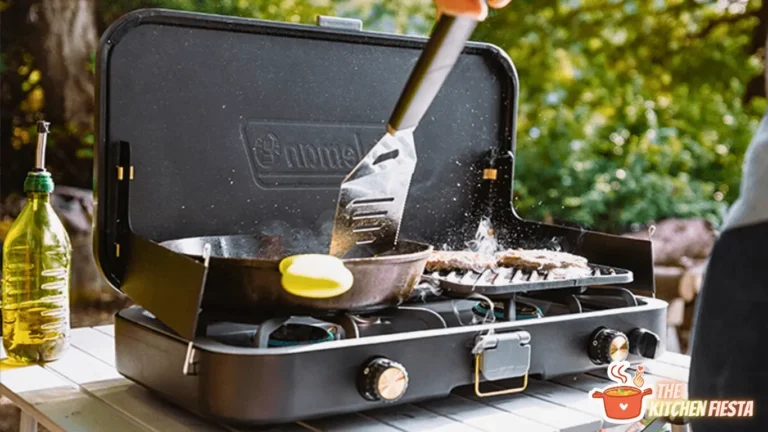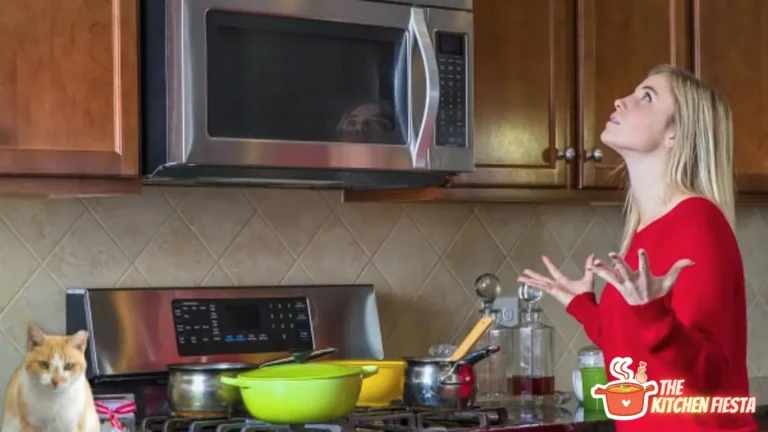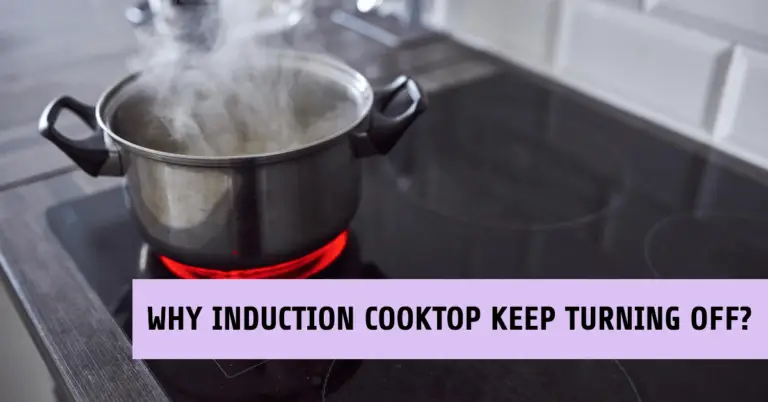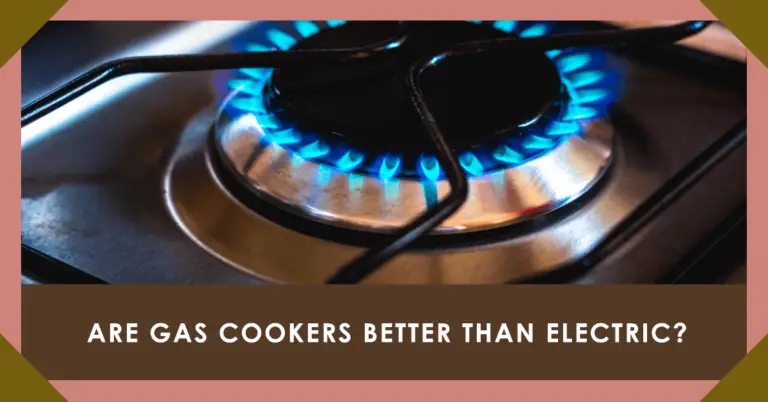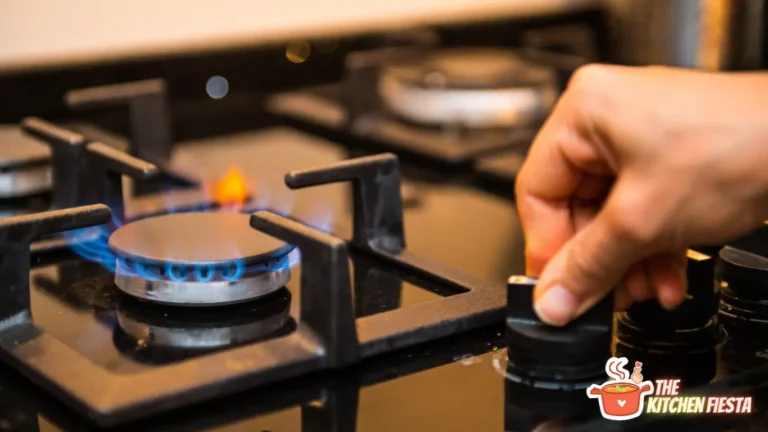Why Are Gas Stove Grates Positioned So High Up?
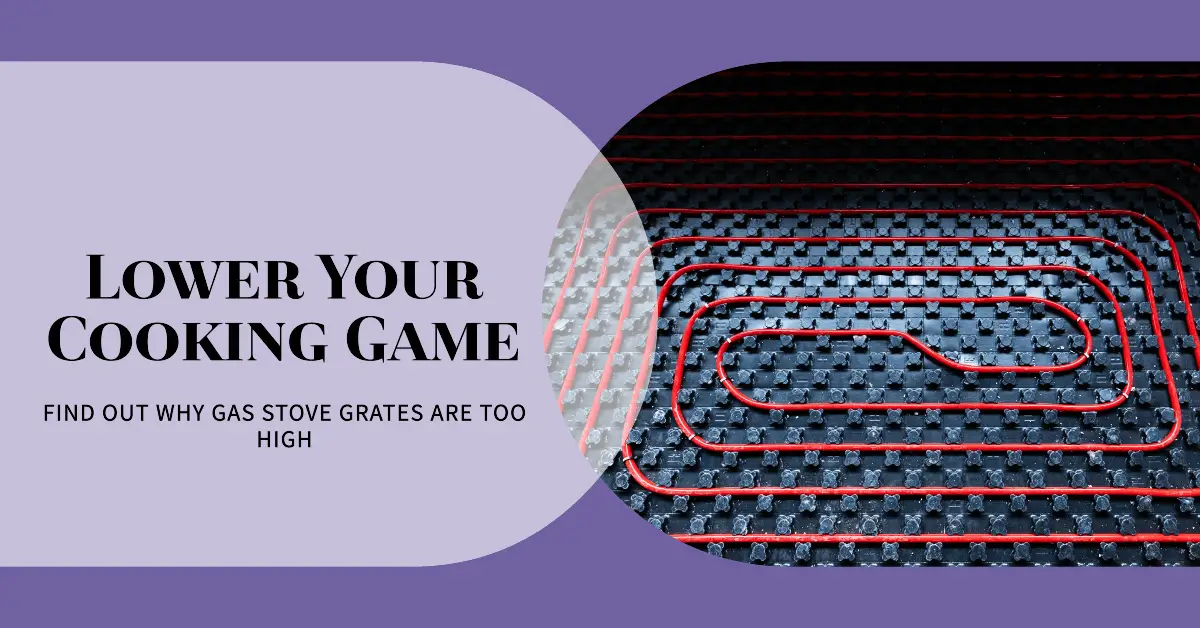
Have you ever cooked on a gas stove and wondered why the grates seem to be positioned so far above the burners? It can be frustrating trying to cook on a gas stove with grates that are much higher than expected.
Why are gas stove grates often set so high above the burners?
The height of most gas stove grates is by design for several important reasons. While tall grates can take some adjustment, understanding why they are that way and learning proper techniques makes cooking much easier.
In this article, we’ll explore all the details about gas stove grates, including:
- What exactly are stove grates and what are they made of
- The reasons behind the increased height of most grates
- How high grates compare between residential and commercial stoves
- The potential problems high grates can cause
- Tips for comfortably and safely cooking with raised grates
- Whether grate height can be adjusted on some models
- Proper cleaning and maintenance of gas stove grates
- Safety considerations for using your stove and its grates
Let’s get cooking and discover everything you need to know about gas stove grates!
What Are Gas Stove Grates?
The grates on a gas stove are the removable metal components that sit above the burners to hold pots and pans. Most residential gas ranges have 3-5 circular burners of varying sizes and power.
Grates on a gas stove provide a sturdy surface for placing cookware over the open flames from the burners below. They allow heat to transfer from the burner to the bottom of pots and pans. Grates support the weight of heavy stockpots and other cookware while heating the contents inside.
Gas stove grates are typically made of either cast iron or stainless steel. Cast iron grates offer excellent heat distribution. The thick material absorbs heat from the burner and spreads it evenly across the grate’s surface. Cast iron grates are durable but prone to rust if not properly cleaned and maintained.
Stainless steel grates provide good heat conduction while resisting corrosion and rust. They are lighter weight than cast iron and easier to clean. However, stainless steel does not retain heat as well for even warming.
Another option is porcelain-coated grates. These have a porcelain enamel finish over cast iron or steel that prevents rust and makes cleaning simpler.
Why Are The Grates So High Up?
One of the first things you’ll notice cooking on a gas stove is that the grates sit much farther above the actual burners than expected. There are several reasons gas stove grates are designed this way:
Heat Distribution
Having the grates set higher allows more even and efficient heat distribution. This results in better cooking performance.
With a greater distance from the burner, the flame spreads out more before reaching cookware. This creates relatively even heating across the entire bottom surface of a pot or pan.
If the grates were lower, the concentrated flames would directly only hit the bottoms edges of pots. Food would cook faster and hotter at those spots closest to the burner.
Accommodate Larger Cookware
Raising the grates provides more clearance to accommodate extra tall stockpots and other large cookware.
Many modern gas stoves have 1 or 2 high-BTU burners designed for fast boiling, stir-frying, and searing using big pans. The increased height enables these powerful burners to handle large cookware.
Lower grates would limit the size pots and pans that could fit on the stove. The popular trend of pro-style ranges with tall grates allows for serious cooking capacity.
Reduce Boil Overs
Another useful benefit of increased grate height is boil over prevention. Keeping the grates farther from the flames results in fewer messy overflows.
With a pot raised up on tall grates, there is extra space between the cooking liquid inside and the burner flames. This makes it less likely for bubbles to spill over the sides, creating a sticky mess on your cooktop.
Easier to Clean Around Burners
The sizeable gap between the burners and grates enables easier cleaning access all around the stove. Food drips and grime tend to accumulate on surfaces under and surrounding the burners.
Having the ability to fully remove grates makes it simpler to scrub away sticky spills and burned-on food. The open space lets you conveniently wipe down the cooktop and area around the burners.
Typical Gas Stove Grate Height
On average most home gas stove grates sit around 4-6 inches above the cooktop surface. However, height varies quite a bit by model.
Basic low-end gas ranges often have shorter grates in the 3-4 inch range. More heavy-duty models and pro-style stoves boast grates 6 inches or taller above the burners.
Some extra powerful commercial-style residential ranges have grates nearly 12 inches high. Of course professional gas ranges found in restaurants have extremely tall grates, sometimes 18 inches above the flames.
These pro-grade setups are made for serious heavy duty cooking with intense BTU power and giant stockpots full of soup or chili. Home cooks rarely need such industrial equipment.
Problems Caused by High Grates
While increased height provides some useful benefits, it can also lead to a few cooking difficulties:
Reaching Over Burners
The most obvious issue with grates positioned very far above the cooktop is comfort and safety. Having to reach so high above the open flames to stir, whisk, or check on food can be awkward.
Trying to lift heavy pots on and off tall grates can also be challenging. And there is greater risk of accidentally touching hot grates or burners when reaching over high stoves.
Those who are shorter in stature may find it uncomfortable, difficult, or even dangerous trying to cook safely on a range with extremely elevated grates.
Increased Cooking Time
Another downside is that with cookware sitting farther from the heat source, it typically takes a little longer to bring water to a boil or get pots up to temperature.
When the bottom of pans are raised further from the flames, they are receiving heat at the weaker outer edges of the burner’s output. This may require turning up heat slightly and allowing extra time to boil.
Uneven Heating
There is also greater likelihood for uneven cooking results on tall grates. With the bottom of pots and pans raised into the midpoint of flames, the areas directly above the burners can reach higher temperatures.
This uneven heating with hotter spots over the flames can lead to inadvertent scorching or burning in those areas if not carefully monitored.
Safety Hazards
The substantial increased height of commercial-style grates comes with added safety considerations. There is greater risk of pots boiling over if not watched closely. And more distance for hot food spills to fall onto open flames or hot burners if not cleaned up promptly.
Having to reach so high over the stove also leads to potential burns and increased chance of accidentally touching hot surfaces. Careful monitoring and protection is required when cooking over high grates.
Tips for Cooking with High Grates
It just takes a few minor adjustments to comfortably and safely cook on a gas stove with grates raised high above the burners:
- Use a step stool to easily see inside pots and pans without dangerously reaching over burners. This allows proper monitoring and stirring food during cooking.
- Start food over a slightly higher flame to initially get up to temperature faster. Then turn heat down once heated through to prevent scorching on the bottom edges.
- Use extra caution when cooking foods prone to boiling over like pasta or oatmeal. Watch closely and be ready to immediately turn down heat if bubbles start rising too high.
- Choose appropriately sized cookware for each burner so pots and pans sit centered above the flames. This provides the most direct, even heating.
- Take advantage of the increased clearance under high grates and use those mega stockpots when preparing giant batches of chili or spaghetti sauce.
- Keep the grates clean of any stuck-on food or grime buildup so cookware makes full contact for efficient heat transfer.
- Replace old grates that are warped or wobbly. New flat, properly fitted grates will provide steady, even support for all your pots and pans.
- Allow a few extra minutes of preheat time on foods like oil for frying or pans for searing meat. The extra distance from heat requires a little longer preheating.
Adjusting Grate Height on a Gas Stove
Some gas stove models do allow for grate height adjustment. There are a few ways grate height can potentially be customized:
- Removable grate supports – Some grates sit on supports that can be taken off and flipped over to raise or lower the overall grate position.
- Adjustable legs – On certain models, the grate legs are adjustable. They can be screwed in or out in small increments to lower or raise the grates as needed.
- Inserts – Thin metal inserts can be purchased to place under grates and raise them slightly if clearances allow. Always check manufacturer guidelines before using any non-standard inserts.
- Replacement grates – If your stove does not include ways to alter the grate position, you can buy replacement grates in varying standard heights. Just be sure any replacements properly fit your exact make and model.
For extremely tall commercial-style grates, it may be necessary to install smaller standard residential grates designed for typical home kitchens. Verify precise grate measurements before purchasing replacements.
Maintaining Proper Grate Height
Keeping the grates on your gas stove at an optimal height improves cooking efficiency and safety. Here are some tips for maintaining the proper grate position:
- Periodically check that all grates are sitting level. Uneven grates can lead to uneven cooking results.
- Measure the distance between each burner and its grate to confirm they are all uniformly set at the same height.
- Make certain adjustable legs or supports are firmly tightened in position. Loose grates are dangerous and can shift when loading heavy cookware.
- Watch for warping grates which may throw off intended height over time. Replace dented or warped grates for maximum stability.
- Clean under grates regularly to prevent food/grease buildup from lifting grates higher than intended.
- When raising grate height, ensure overhead clearances allow room for tall pots. Watch for contact with oven vents, microwave units, or shelves.
Cleaning Gas Stove Grates
To allow proper heat flow, it is important to keep gas stove grates clean of baked-on food and buildup.
Use a plastic or nylon scrub pad with dish soap and hot water for regular grate cleaning. For stuck-on grime, make a paste of baking soda and water and gently scrub.
Rinse and dry grates thoroughly after cleaning. Water droplets can lead to rust if left to sit on grates. Avoid soaking grates to prevent corrosion.
For stainless steel grates, a stainless steel cleaner helps restore shine and prevent oxidation. Season cast iron grates occasionally with a thin wipe of vegetable oil to maintain the cooking surface after cleaning.
Avoid using harsh chemicals like oven cleaner on grates. This could damage the finish. Always refer to the manufacturer’s care guidelines for your specific grates.
Gas Stove Grate Safety Tips
Proper use and care of your gas stove and its grates are vital to safe cooking:
- Ensure grates are properly seated so pots and pans sit flat and steady. Wobbly cookware can tip, spill hot contents, or come into contact with open flames.
- Keep children away from the stove when in use to prevent serious burns. Do not allow climbing on grates.
- Remember grates become extremely hot. Always use potholders or oven mitts when handling to avoid burns. Allow grates to fully cool before touching them or areas close to burners.
- To prevent tipping accidents, make sure pots and pans are centered above burners. Cookware should never overhang small grates.
- Clean up all food or liquid spills immediately to avoid drips running under the grates and creating a fire hazard.
- Turn all burners off promptly when finished cooking. Make it a firm habit to double check knobs are in the off position after each use.
Conclusion
Gas stove grates are designed to sit higher off the cooktop than many expect. But this increased height serves several helpful purposes for cooking evenness, easy cleaning, and handling large pots and pans.
With a few simple adjustments to your cooking techniques, those raised grates should not get in the way of preparing great meals. Follow basic safety measures, keep your grates properly maintained, and enjoy all the benefits of cooking on a high-performance gas range.
The next time you go to boil water or heat oil in a pan, remember why those grates are positioned so far above your burners. While it may require some initial getting used to, that extra height is there for some very useful reasons. Now you can cook comfortably and safely on your gas stove!

